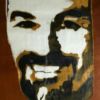7 Best-Selling Virology Books Millions Trust
Recommended by Jon Najarian, Pierre Haski, and Elizabeth Kolbert, these best-selling Virology books offer proven, expert-backed knowledge for readers seeking trusted insights.



There's something special about books that both experts and millions of readers value, especially in a field as critical as Virology. With viruses shaping global health challenges and scientific progress, understanding their nature and impact has never been more urgent. These seven best-selling Virology books combine gripping narratives and rigorous science, helping you grasp viral outbreaks, diagnostics, and laboratory methodologies that have stood the test of time.
Experts like Jon Najarian, co-founder of Investitute and CNBC anchor, praise The Hot Zone for its compelling connection between viral origins such as Ebola and coronavirus, highlighting its relevance amid ongoing pandemics. Pierre Haski, a geopolitical commentator and RSF president, found this book an invaluable companion during the SARS crisis in Beijing, demonstrating its enduring influence. Pulitzer Prize–winning author Elizabeth Kolbert underscores Crisis in the Red Zone for its immersive portrayal of the deadliest Ebola outbreak, blending human stories with scientific insight.
While these popular books provide proven frameworks, readers seeking content tailored to their specific Virology needs might consider creating a personalized Virology book that combines these validated approaches with your unique background and goals. This custom approach can sharpen your focus and accelerate your learning journey.
Recommended by Jon Najarian
Co-Founder @Investitute, CNBC Anchor
“I believe both the corona virus and ebola have a bat connection. Scary, but great book on ebola: Hot Zone by Richard Preston” (from X)
by Richard Preston··You?
by Richard Preston··You?
Millions have been drawn to this book for its gripping account of the Ebola virus's first emergence. Richard Preston, a seasoned New Yorker writer and recipient of the CDC's Champion of Prevention Award, brings a journalist's eye to the terrifying story of a highly infectious virus crossing into human populations. You’ll uncover how the virus spreads, the military’s urgent containment efforts, and the stark reality of contagion through detailed episodes like the Washington suburb outbreak. Anyone curious about infectious diseases or public health crises will find the narrative both informative and unsettling, offering a clear window into viral outbreaks without sensationalism.
Recommended by Elizabeth Kolbert
Pulitzer Prize–winning author
“Crisis in the Red Zone reads like a thriller. That the story it tells is all true makes it all more terrifying, and there’s no one who could tell it better than Richard Preston.” (from Amazon)
by Richard Preston··You?
When Richard Preston first uncovered the intense human and ethical struggles during the 2013–2014 Ebola outbreak, he crafted a narrative that plunges you into the heart of a global health crisis. You learn not just about the virus's biology but about the frontline medical efforts, governmental responses, and pharmaceutical races that shaped the pandemic’s course. The book offers gripping accounts of field doctors’ risks and the agonizing decisions over experimental treatments, particularly highlighted in chapters detailing the outbreak’s explosive spread across continents. If you seek a vivid understanding of viral epidemics and the complex interplay of science, politics, and humanity, this book offers an unvarnished, immersive experience.
This tailored book explores the intricate world of virology research, focusing on techniques and approaches suited to your unique background and goals. It reveals detailed strategies for studying viruses, examining viral replication, host interactions, and laboratory methods in a way that matches your interests. By combining established knowledge with your specific focus areas, this personalized guide helps deepen your understanding of viral mechanisms and experimental design. The tailored content ensures you engage directly with topics relevant to your research ambitions, making complex virology concepts accessible and applicable. This book covers everything from molecular virology fundamentals to advanced laboratory practices, helping you advance confidently in your studies.
by Bernard Fields·You?
by Bernard Fields·You?
When Bernard Fields dedicated himself to "Fundamental Virology," he sought to assemble the core principles and detailed mechanisms behind viral biology and pathogenesis into a single reference. Though originally published in the mid-1980s, this volume offers you a deep understanding of viral replication cycles, molecular structures, and host interactions, which remain foundational to virology today. Its extensive coverage benefits advanced students, researchers, and medical professionals who need a solid, scientifically rigorous framework rather than a superficial overview. Chapters delve into virus classification and the molecular basis of viral diseases, equipping you with the knowledge to engage with virology at a scholarly level.
by Frances W. Doane, Nan Anderson·You?
by Frances W. Doane, Nan Anderson·You?
What happens when microscopy expertise meets diagnostic virology? Frances W. Doane and Nan Anderson offer a focused examination of electron microscopy's role in identifying viruses, blending detailed visual atlases with practical guidance. You’ll gain skills in interpreting ultrastructural viral features, helping refine diagnostic accuracy in clinical virology settings. This book is tailored for medical laboratory professionals, virologists, and researchers seeking a hands-on reference to complement molecular techniques, especially valuable when viral culture or PCR results are inconclusive. Chapters dissect virus morphology with annotated images, making complex microscopic details accessible without overwhelming jargon.
by G. D. Hsiung, Caroline K. Y. Fong, Marie L. Landry·You?
by G. D. Hsiung, Caroline K. Y. Fong, Marie L. Landry·You?
What happens when decades of virology expertise meet detailed microscopy? G. D. Hsiung and co-authors bring you a richly illustrated guide focused on identifying virus-induced cellular changes through both light and electron microscopy. You learn to navigate from specimen collection through virus isolation, with expanded insights into human retroviruses amid the AIDS crisis and thorough coverage of arboviruses and hepatitis viruses. This book suits pathologists, laboratory technicians, and virology students looking to deepen their diagnostic skills with practical visual references and updated viral characterization techniques. It’s a solid choice if your work or study demands precise viral identification methods grounded in morphological evidence.
by TailoredRead AI·
This tailored book explores step-by-step diagnostic approaches designed to rapidly enhance your virology skills. It covers essential diagnostic techniques, virus identification methods, and specimen handling procedures, all matched to your background and interests. By focusing on your specific goals, it reveals practical insights into virus morphology and laboratory applications that make complex virology accessible and engaging. The content is personalized to help you build confidence and competence in virus diagnostics, combining widely validated knowledge with your unique learning needs. Emphasizing hands-on methods, the book offers a focused path to mastering diagnostic virology techniques efficiently and effectively.
by D. E. White, Frank J. Fenner·You?
by D. E. White, Frank J. Fenner·You?
Medical Virology, authored by D. E. White and Frank J. Fenner, builds on decades of experience to offer a thorough yet approachable exploration of viruses affecting humans. You’ll find it dives deep into molecular biology, viral replication, and pathogenesis while balancing clinical features and modern diagnostic techniques with clarity. For example, its 36 chapters include detailed discussions on immunity, epidemiology, and vaccine development, supported by instructive diagrams and succinct tables that clarify complex concepts. If you're advancing in medical sciences or virology research, this book equips you with a solid foundation and current insights without overwhelming you with minutiae.
by Florence G. Burleson, Thomas M. Chambers, Danny L. Wiedbrauk·You?
by Florence G. Burleson, Thomas M. Chambers, Danny L. Wiedbrauk·You?
Florence G. Burleson, Thomas M. Chambers, and Danny L. Wiedbrauk bring decades of virology and laboratory experience to this manual, crafted specifically for semester-long courses. You’ll gain hands-on skills in viral quantification, antibody assays, and cell culture techniques, guided by detailed protocols that emphasize practical execution without requiring complex instrumentation. The book’s structure lets you tailor experiments to fit your schedule, with discussion questions and reading suggestions enriching your understanding. This manual suits students and instructors seeking a focused, adaptable approach to virology labs rather than theoretical overviews.
Popular Virology Methods, Personalized ✨
Get proven Virology insights without generic advice that misses your needs.
Trusted by thousands of Virology enthusiasts and experts worldwide
Conclusion
These seven Virology books collectively highlight the field's multifaceted nature — from captivating outbreak narratives to expert laboratory manuals and diagnostic guides. If you prefer proven storytelling paired with expert insights, starting with The Hot Zone and Crisis in the Red Zone offers a vivid understanding of viral epidemics.
For validated scientific approaches, combining Fundamental virology with Medical Virology and diagnostic-focused works like Electron Microscopy in Diagnostic Virology and Hsiung's Diagnostic Virology deepens your practical and clinical expertise. Meanwhile, Virology: A Laboratory Manual delivers flexible, hands-on protocols ideal for applied learning.
Alternatively, you can create a personalized Virology book to combine proven methods with your unique needs. These widely-adopted approaches have helped many readers succeed in mastering Virology’s complexities.
Frequently Asked Questions
I'm overwhelmed by choice – which book should I start with?
Start with The Hot Zone for an engaging, narrative-driven introduction to viral outbreaks. It provides a gripping look at Ebola's emergence that’s accessible yet informative, setting a strong foundation before diving into more technical texts.
Are these books too advanced for someone new to Virology?
Not at all. While some titles like Fundamental virology are advanced, others such as Virology: A Laboratory Manual and Medical Virology balance detail with clarity, making them suitable for learners at various levels.
What's the best order to read these books?
Begin with outbreak narratives (The Hot Zone, Crisis in the Red Zone), then explore foundational science in Fundamental virology and Medical Virology. Finally, deepen practical skills with diagnostics and lab manuals.
Should I start with the newest book or a classic?
Both have value. Classics like Fundamental virology provide enduring science, while recent narratives like Crisis in the Red Zone offer current epidemic perspectives. Choose based on your learning goals.
Do I really need to read all of these, or can I just pick one?
You can pick based on interest: choose narrative books for context or manuals for hands-on skills. To cover all bases, combining a few will give the richest understanding.
How can I get Virology insights tailored to my specific needs without reading multiple full books?
Personalized Virology books complement expert recommendations by focusing exactly on your interests and experience. They combine proven content from top books with your unique goals. Explore custom Virology books here.
📚 Love this book list?
Help fellow book lovers discover great books, share this curated list with others!
Related Articles You May Like
Explore more curated book recommendations






